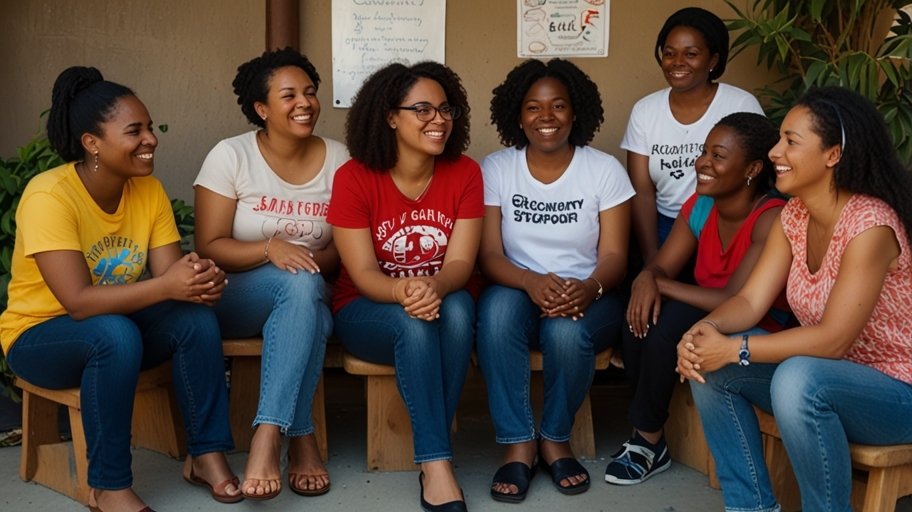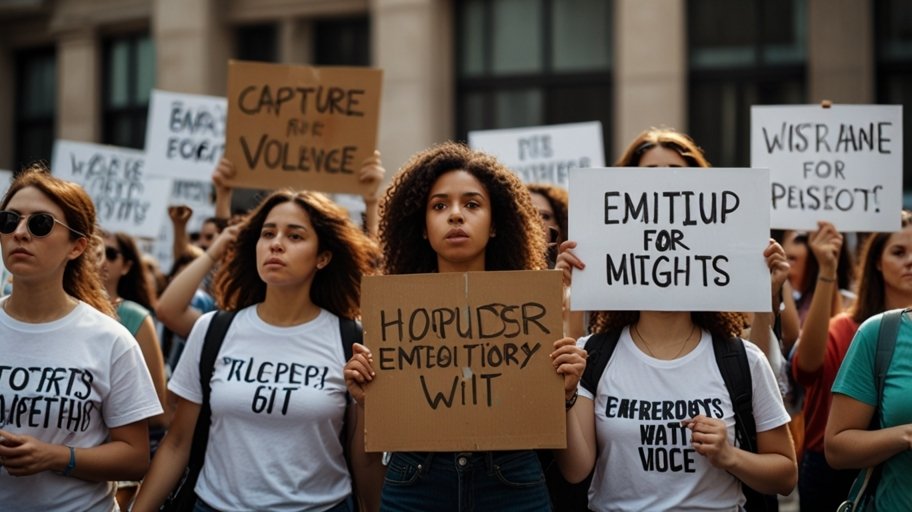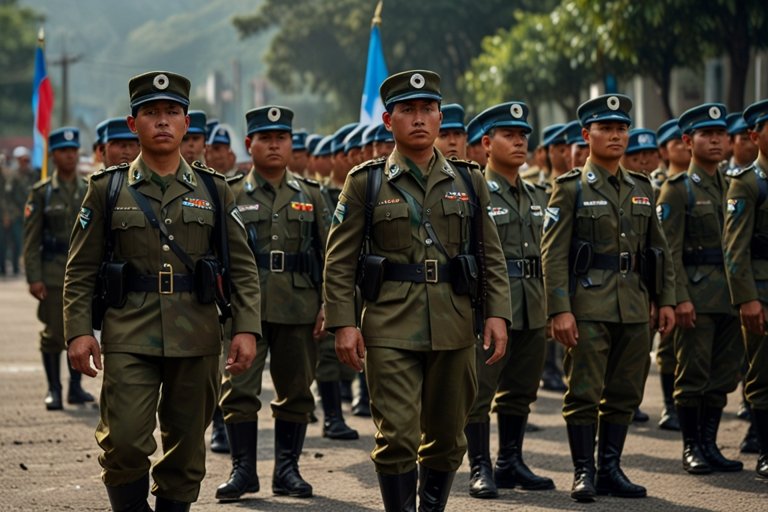Introduction
Guatemala, a Central American country marked by a history of conflict, inequality, and poverty, continues to face significant challenges in addressing violence against women. Violence against women in Guatemala is not just an isolated problem but a pervasive issue that permeates nearly every aspect of Guatemalan society, from domestic violence to human trafficking, femicide, and sexual harassment. Indeed, law has evolved, and so have social movements fighting for women’s rights, yet at the ground level, things look dire.
The article discusses the situation of violence against women in Guatemala, legal frameworks that have been adopted, and social movements involved in such transformation.
- Contextualizing Violence Against Women in Guatemala
Guatemala has one of the highest rates of violence against women in Latin America. This is influenced by a set of factors that include deeply entrenched patriarchy and social inequality and weak state institutions. Guatemala experienced internal armed conflict for a record-breaking 36 years that ended in 1996; consequently, this resulted in a legacy of gender-based violence. Rape and sexual violence were used as tools during the armed conflict, which influenced societal attitudes towards women.
Violence Against Women in Guatemala: Legal Framework and Social Movements_e0485488_20335385.jpg
The poverty situation worsens the case because most of the poor women are indigenous. Many lack education, healthcare, or legal protection that leaves the women exposed to violence. Corruption and impunity in the administration of justice deny women access to their rights.
Types of Violence Against Women in Guatemala
The forms violence against women in Guatemala assumes are as follows:

Domestic Violence: One of the most widespread forms of violence is domestic violence, which mostly occurs without anyone reporting it to the relevant authorities. Such violence takes place in homes and within families due to social stigma, fear of being retaliated against, and because of distrust in the judicial system. Mostly, the number of sheltered women for domestic violence is small. In this regard, their legal representative and counseling facilities are fewer.
It is enough just to recall that femicide is really very high in Guatemala, where one of the world’s highest femicide rates was recorded. Between 2008 and 2018, the murder of more than 7,000 women was documented. Murders are done with extreme brutality, and this testifies to the depth of misogyny and to the seriousness of the normalization in society of violence against women.
Sexual Violence: Another major issue in Guatemala is sexual violence, which encompasses rape and sexual assault while sexual exploitation is widespread. In most cases, sexual violence primarily targets indigenous women and girls, many of whom hail from vulnerable groups. Very few perpetrators are brought to justice.
Human Trafficking- Human trafficking is increasingly becoming a significant source, transit point, and destination country in Guatemala, targeting sexual exploitation and forced labor particularly. In this case, women and young girls constitute more of the population and mostly suffer from extreme violence and abuse at the hands of traffickers.
Street Harassment: Street harassment, such as catcalling, groping, and other sexual harassment in public places, is widespread in Guatemala. This is part of the larger cultural issue of machismo, which deems women inferior and objects of male desire.
- Law and Policy on Violence Against Women
During the past few decades, Guatemala has developed significantly on the legal framework against violence toward women. The major issue still remains with the application and implementation of those rights.
Constitution of Guatemala (1985): The Constitution of Guatemala promulgated in 1985 also ensures the rights of both men and women on equal footing. The state is legally bound to uphold equality and abolish discrimination, but constitutional provisions of this kind have not been able to prevent women from suffering violence in the real world.
Anti Femicide and Other Attacks towards Woman and/or Girl Law (2008). The most important legislation law achieved in Guatemala in order to combat gender-based violence refers to the Law Against Femicide and Other Attacks towards Woman and/or Girl, passed in 2008. This explicitly declares femicide a criminal practice and punishes killers under more severe sentences. It further expands the idea of violence against women and incorporates other forms of psychological, economic, and sexual violence in the private and public domains.
Comprehensive Law to Combat Violence Against Women (1996). A major legal stride was recorded in 1996 through the Comprehensive Law to Combat Violence Against Women. These were laws that would be a more comprehensive tool to render more effective protection for women through the establishment of restraining orders, criminalization of criminals, and providing support services for victims. The limitation felt by this law lies in the fact that it stands weakest in the rural sectors where policemen often find themselves ineffective.
Sexual Violence, Exploitation, and Human Trafficking Law 2009 In 2009, the law passed was known as the Law Against Sexual Violence, Exploitation, and Human Trafficking, with an aim of eradicating sexual violence and human trafficking. This law punished sexual crimes while offering protection to the victims of human trafficking. There were special units created in the police and judicial systems to deal with cases of sexual violence and trafficking. Enforcement is still patchy, and most cases remain unreported or unprosecuted.

Victims of Violence Law (2016): The Victims of Violence Law, enacted in 2016, aims to improve the services and support that survivors of violence can access, including legal aid, health service delivery, and psychosocial care. It also aspires to enhance the capacity and operational ability of the police in handling their part of the response chains on violence against women. According to the law, specialised courts will be established to handle violence against women cases.
Despite these laws, there is a great difference between legal protections and the lived reality of women in Guatemala. Corruption, impunity, and a lack of political will often prevent these laws from being enforced effectively. The justice system continues to suffer from inefficiencies, so the worst perpetrators of violence against women often never enter a courtroom. In addition, many rural and indigenous women are not made aware of their rights and legal services.
- Social Movements and Civil Society
A high and rising scale of violence against women has also led to sprouting up of many social movements and civil society organizations across Guatemala which are fighting to obtain a better deal for women by demanding system change. They could raise awareness of this gender-based violence issue, hence pushing the government to take up strong legal measures.
The Women’s Movement, or Movimiento de Mujeres, has led the front in the fight against gender-based violence. This movement over the years has led quite a number of protests and campaigns to raise awareness regarding the acts of femicide and other cases of violence against women. Many of these groups have even been vocal for justice served to the victims of this gender-based violence and a more reformed system of the justice department.
Indigenous Women Movements: The indigenous women of Guatemala experience a type of marginalization that is uniquely theirs, inasmuch as they are both marginalized through gender and ethnicity. These indigenous women movements have, therefore, been pivotal in promoting the rights of the indigenous women, especially on violence and discrimination. Such movements sought to amplify the intersectionality between racial inequality and gender-based violence and demanded women greater access to justice.
Ni Una Menos Movement: The Argentine-based movement, Ni Una Menos, has found it very easy to get started in Guatemala. The movement is against femicide and violence against women. The term “Ni Una Menos” means “Not One Less,” referring to the refusal to allow any more women to be lost to gender-based violence. Mass protests across the country make very basic demands on the government and the justice system.
Survivor-Led Advocacy: Survivors of gender-based violence in Guatemala have also become powerful advocates for change. Many women who survived domestic violence, rape, or other forms of violence have spoken out publicly about their experiences, breaking the silence that often surrounds These issues. Survivor-led advocacy has been crucial in challenging the stigma associated with being a victim of violence and in pushing for stronger protections and services for survivors.
International Support and Advocacy: International supporters have also supported the campaign for combating violence against women. There are reports of United Nations, Amnesty International, and Human Rights Watch campaigns to bring to light the problem of gender-based violence in Guatemala. Funding the local NGOs, support to the advocacy campaigns, and pressure to the Guatemalan government to enhance its response to the problem of gender-based violence are some such strategies followed by international supporters. Another international human rights framework that has guided the legal approach to addressing violence against women in Guatemala is CEDAW .
- Challenges and Way Forward
Despite social movements and legal gains through the courts of Guatemala, there remain few challenges toward violence against women. The biggest challenge is perhaps impunity. As estimated, over 90% of femicide cases are unpunished in Guatemala. Justice is often moved at a snail’s pace, corrupt in many situations, and inaccessible to most women-more so if poor, or from rural or indigenous sectors.
Cultural attitudes toward women and gender-based violence are still very deep-seated. Machismo and patriarchal norms dominate much of the country, and these cultural factors have been a part of normalizing violence against women.

To combat violence against women effectively, Guatemala will need to confront these deep-rooted cultural and systemic issues. Legal reform will require significant investment in education, public awareness campaigns, and the empowerment of women, especially from marginalized communities. It will also require strengthening the capacity of law enforcement and the judiciary to hold perpetrators accountable.
Conclusion
The fight against violence toward women in Guatemala is far from over. The country has taken some steps toward development of a legal framework to handle gender-based violence, and social movements continue to push change, but much remains to be done. It is only by carefully taking on both cultural and structural forces that perpetuate violence against women that Guatemala can ensure women everywhere live free from fear and harm.
